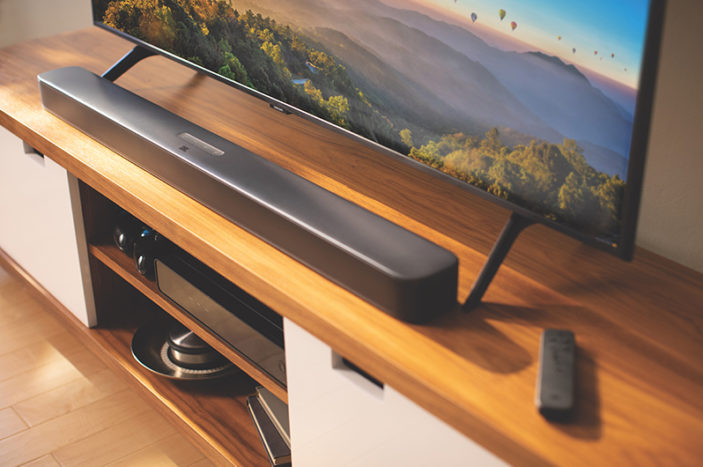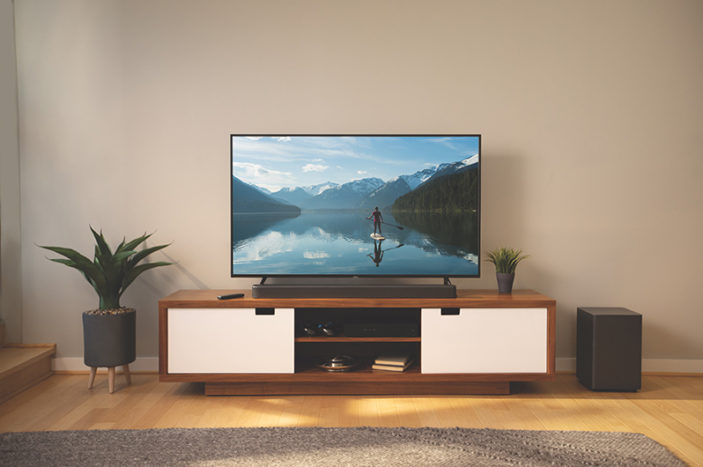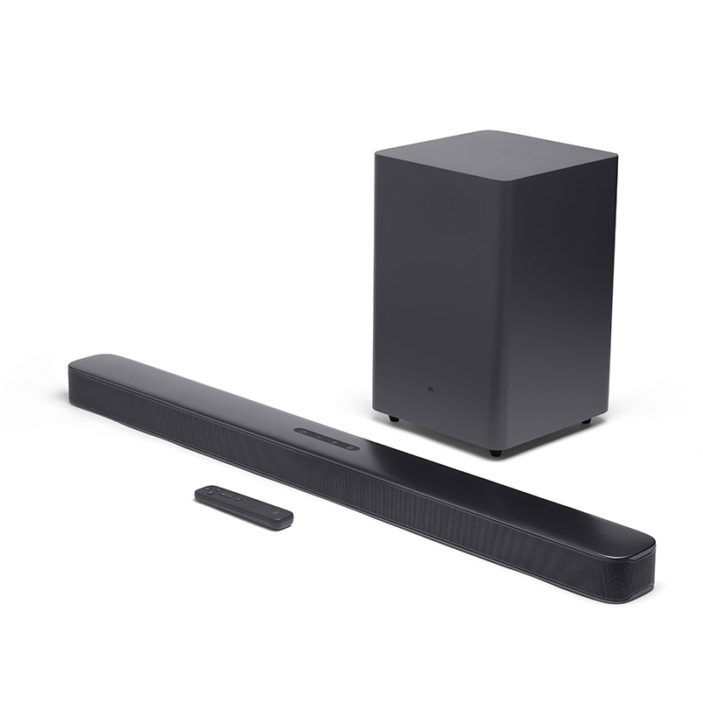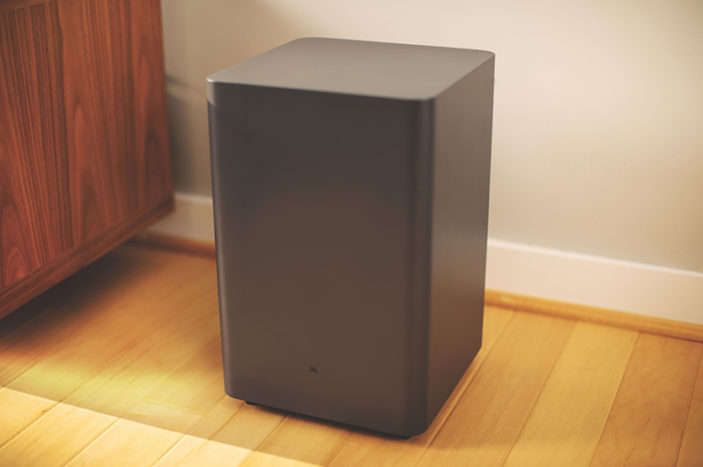
From our desks and workspaces to the overall comfort of our home, we’re all making changes to our homes at the moment to improve our homelife and well.. keep our sanity whilst we spend so much time inside. With one of JBL’s latest releases, the brand is hoping we upgrade our living rooms and turn them into cinemas.
Alongside the ‘Bar 2.0 All In One’ and ‘Bar 5.1 Surround’, JBL has released the ‘Bar 2.1 Deep Bass’. It’s a soundbar and subwoofer pairing that aims to turn your TV, music and gaming sound into full stereo performance with thrilling bass. With an RRP of AU$545, it has solid competition from the same-priced Yamaha YAS-209 2.1 Soundbar and Subwoofer system and the Samsung Series 6 3.1 Soundbar and Subwoofer combo (RRP AU$599). So how does the JBL Bar 2.1 Deep Bass try and win you over?

Design
At 965 x 58 x 85mm, the soundbar fits the space below a medium sized TV best. I’m sure it can be made to look great under any TV but there is a nice appearance of structure, unity and planning when the soundbar is nearly the exact same width as one side of the TV to the other.
A large TV also runs the risk of dwarfing the soundbar and making it look minimal and doing that to the impressive form and design of the soundbar is something to avoid. It looks sleek, modern and well, more expensive than it is. The glossy plastic frame of the soundbar and subwoofer catches fingerprints and smudges and shows dust easily – especially if the subwoofer is in a carpeted space but a wipe down is an easy fix.
There are four depressed buttons on top that smoothly flow into the rest of the unit that control power, volume and source pairing. It is a nice touch that the audio grill on the face of the soundbar continues completely around the sides. This not only pushes sound out at multiple angles but also increases the overall aesthetic flow.

The back of the soundbar features an optical output, HDMI IN to connect to the HDMI output on your digital device and an HDMI OUT to connect to the HDMI ARC input on your TV. There’s also a USB connector for software updates. Our fingers are firmly crossed that the Australian version will allow connection to a USB storage device for audio play like the US market gets to enjoy. Each visible surface of the subwoofer is uniformly smooth and flat with only a power connector on the back. The wireless connection to the sub from the bar is immediate and seamless. A wall-mounting kit is included in the box.
Sound
There’s 300W of total system power in the 2.1 Deep Bass system. With two 50W speakers in the soundbar and 200W of power in the subwoofer, the sound improvement from our TV had us immediately pleased with the upgrade. The soundbar paired wirelessly with the subwoofer immediately and turning on the TV also turned on the soundbar system with it.
The bass is thick enough that we had it set to its lowest setting at all times. It’ll change depending on the acoustics of your room, but we found the bass to peak and muffle at any of the other levels in action movies and streaming playlists with mixed-genres. The sound from the TV hits you dynamically from multiple directions; a wall of sound emanating from the direction of your TV. It’s a nice (and welcome) upgrade.
Left and right audio channels are noticeable but subtle. JBL’s more dynamic (and expensive) 5.1 soundbar package would enhance this even more but games with gunshots and footsteps to one side of the picture made for an engaging experience. We tested the audio watching Interstellar and dialogue was clear as it floated above the building music and sound effects but at times could have used more bass and depth but we were afraid of the subwoofer peaking at other times in the movie. It would be a perfect solution to have similar user-designed EQ and frequency range customisations for the soundbar and subwoofer that exist for JBL headphones through the app.
SoundShift is a feature that will cut your TV/HDMI input audio when you begin to play music through a Bluetooth connected device smoothly. It will then resume playing the TV/HDMI audio when you stop playing the song. It’s pretty great to be able to jump between devices smoothly without having to ever touch the Source button.

Our Tips and Discoveries
We’ve done all of the reading, troubleshooting, digging through settings and reaching out to JBL so you don’t have to. Here are some of our hot tips and discoveries from our time with the JBL 2.1 Deep Bass system.
Teach the soundbar to know your primary TV remote: If the soundbar doesn’t immediately recognise your TV remove, press the SOURCE and + button together until “LEARNING” is displayed in LED lights and then press the + or – button on top of the soundbar, followed by the same button on your TV remote to teach the soundbar to recognise your TV remote so you don’t have to shuffle between multiple remotes.
Audio and video out of sync: If there is a sync issue between the video and sound, hold the TV button on the remote until SYNC is displayed in LED’s and use the + and – button to adjust the delay.
The ultimate experience: For the best audio experience with the 2.1 Deep Bass, JBL recommends that you “place the soundbar and subwoofer on a flat and stable surface and make sure that the subwoofer is at least 1m away from the soundbar, and 10cm away from a wall” so the bass reflects and bounces correctly.
No TV, no music: If you can’t listen to music through the soundbar while the TV is off, you need to alter the CEC command from your TV via the HDMI cable in the settings on your TV.
![]()
![]()
![]()
![]()
![]()
THREE AND A HALF STARS (OUT OF FIVE)
Highlights: Sleek and smooth design, simple pairing and set up, noticeable audio upgrade experience versus TV
Lowlights: A lot of fingerprint, smudge and dust catching plastic, needs more EQ settings to battle peaking bass
Manufacturer: JBL
Price: A$549
Available: Now
Review based on a review unit supplied by JBL.
